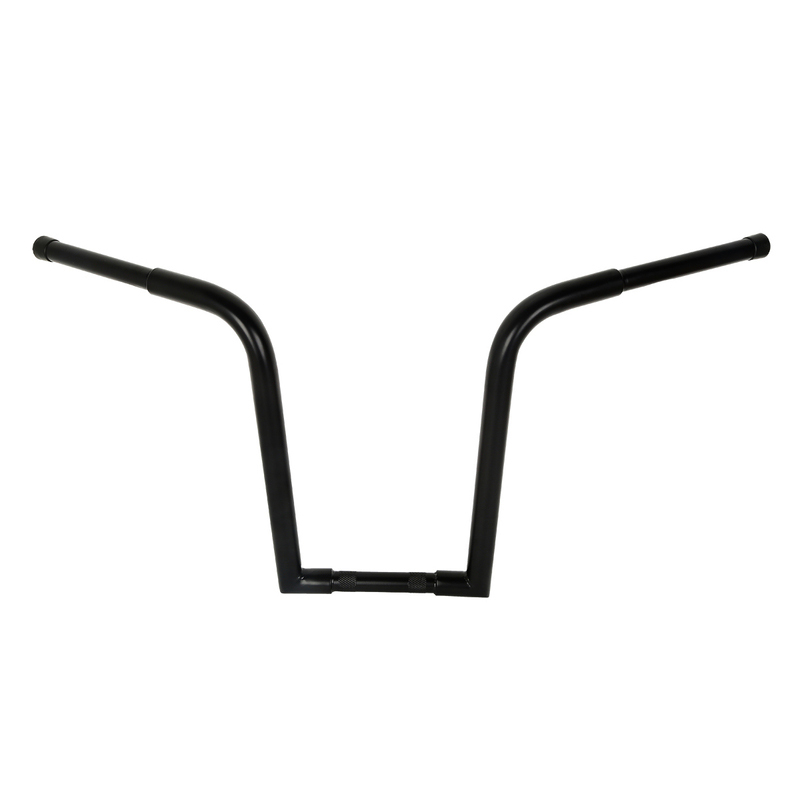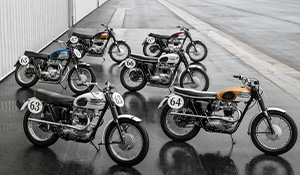FEATURE - 2024 Harley-Davidson Hydra-Glide Revival
Words: Mike Ryan
Photos: Harley-Davidson
When you’ve been in the business of making motorcycles for more than 120 years like Harley-Davidson has, you have a lot of history to draw upon when creating new models or styling and detailing existing ones. While many past Harleys have looked to that history for inspiration, the process was recently given its own place within The Motor Company’s lineup with the creation of the ‘Icons Collection’.

An annual series of limited-edition, never to be repeated motorcycles, the Icons Collection started in 2021 with the ‘Electra Glide Revival,’ followed by the ‘Low Rider El Diablo’ in 2022 and last year’s ‘Electra Glide Highway King’. All have combined retro-influenced design and detail touches with modern drivetrains and the latest technology.
For 2024, the Icons Collection offering is the ‘Hydra-Glide Revival’.

Advance to the Front
As the name suggests, the Hydra-Glide Revival is an homage to the ‘Hydra-Glide’ big twin that debuted for the 1949 model year and took its name from its hydraulically-damped telescopic fork front suspension that was a first for Harley-Davidson back then. The year prior, Harley-Davidson had introduced the Panhead engine, replacing the Knucklehead that had been around since 1936. There’s been speculation that Harley planned to introduce both the new engine and tele fork front end for 1948, but ultimately, the two advancements were separated.

Prior to 1949, all Harley big twins had relied on the leading link-style ‘springer’ front end, but telescopic forks (which had been around for a decade by this stage) were lighter, easier to build and performed better. But, as evidenced by the rigid rear end and hand-change transmission that were still in use at this time, Harley-Davidson weren’t what you would call ‘early adopters’ of new technology. Neither were their customers, so for 1949, you could have your Harley Model E (61ci) or Model F (74ci) with either springer OR tele fork front suspension. Take-up rate of the latter was overwhelming, though, leading to tele forks becoming standard on the big twins from 1950 onwards, but curiously, they wouldn’t be added to the Servi-Car trike until 1958.
Nostalgia for the springer front end saw it re-introduced on a Softail variant in 1988. It’s been in and out of the Harley-Davidson catalogue occasionally since and was most recently seen on the Softail-based Crossbones model from 2011.

Minor Change, Major Style
From its introduction, until the addition of a swingarm and twin-shock rear suspension for 1958 saw the ‘Duo-Glide’ name debut, changes to the Hydra-Glide were minimal. Engine power increased for both the 61ci and 74ci engines in 1950, thanks to head changes and larger intake ports, with improvements to the valve gear coming in 1951. A conventional foot gear change and hand clutch was introduced for 1952, which would be the last year for the Model E. Valvegear was redesigned for 1953 and throttle action improved for 1954, when all Harleys were adorned with a 50th Anniversary medallion (a year late) on the front mudguard.
A high-compression version of the 74ci engine was offered in 1955 (the FLH), with the cams reprofiled for 1956 and further valve changes for 1957, which was the last year for the rigid frame big twins.

Throughout this period, a range of exotically-named colours were available, like Hollywood Green, Persian Red, Cavalier Brown, Atomic Blue and Champion Yellow. Metallic paint options were offered from 1949, with mix ‘n’ match colours for the fuel tank and mudguards available from 1954 and a new-look ‘Big V’ tank badge added in 1955.
In 1956, two-tone colour schemes were introduced and it’s these that have inspired the finish of the 2024 Hydra-Glide Revival. Back in ’56, you could have your FL in Black with Champion Yellow tank panels, Atomic Blue with Champion Yellow panels, Flamboyant Metallic Green with White panels or Pepper Red with White tank panels. The latter has been reinterpreted on the modern homage.

The New Old Look
Referred to as the “slash” by Harley-Davidson, the two-tone colour treatment is one of the keys to the Hydra-Glide Revival’s retro vibe. The combination of Redline Red with Birch White tank panels echoes the look of the ’56 FL, while bold “V” tank badges are in the style of what was offered in 1955 and 1956.
Other cosmetic touches include a Redline Red tint on the lower portion of the removable 21-inch windshield, ‘Hydra-Glide’ badging on the front mudguard and a retro-look circular air cleaner cover. The instrument pod has graphics in the style of a 1954-55 FL and chrome is in abundance - on the engine, exhaust, crash bars, mudguard trim, fork legs, handlebars, mirrors and the 16-inch spoked wheels.

The Hydra-Glide Revival’s solo seat adds further to the C1950s look with its chrome rail, white piping and red contrast stitching. Metal studs and conchos (a Native American decoration first seen on belts and later applied to horse saddles) on the seat’s fringed leather valance continues onto the leather and vinyl saddlebags. These also feature white piping and red contrast stitching, while the black leather tank strap is embellished with a concho. The saddlebags offer a combined 43-litre capacity, are water-resistant and come with keyed locks and rigid liners.

Modern Base
For all its retro looks, the Hydra-Glide Revival is based on the latest Softail platform and is closest to the Heritage Classic in terms of mechanical spec. The Milwaukee-Eight 114 v-twin produces 69kW (93hp) at 5020rpm and 158Nm at 3000rpm in this application, which is fractionally more torque than the Heritage Classic Softail. The engine is fitted with a Screamin’ Eagle High-Flow air cleaner behind the retro-look cover and will take all existing Screamin’ Eagle Stage Upgrade kits, although such bolt-on additions may impact this collectable bike’s value in the future.

The six-speed Cruise Drive transmission, belt final drive, disc brakes with ABS and dual bending valve 49mm front forks are all unchanged from the Heritage Classic, but the rear suspension has less travel – 43mm vs 56mm. There is rear preload adjustment, though.
Cruise control is standard, as is LED lighting and an analogue speedometer with digital inserts for the revcounter, odometer, gear position, tripmeters, fuel level and clock.
Seat height is 685mm and fuel capacity 18.9 litres. The additional chrome and standard equipment means the Hydra-Glide Revival comes in 2kg heavier than the Heritage Classic Softail at 332kg wet.

Strictly Limited
As with last year’s Electra Glide Highway King, only 1,750 examples of the Hydra-Glide Revival will be built for worldwide release, and once sold out will not be repeated. Each unit’s individual number will feature on a special handlebar riser cap insert, while an ‘Icons Motorcycle Collection’ decal is on the rear mudguard.
Australia’s allocation of the 1,750 units to be built has not been revealed, but pricing has - $42,995, which is a $4K premium over the list price for a Heritage Classic Softail.
With only a handful of this limited-edition expected to be offered in Australia, customers should contact their local Harley-Davidson dealer soon to order before the local allocation is exhausted.
See your Harley-Davidson dealer for more details.













